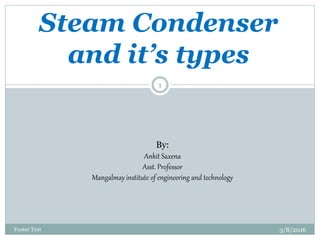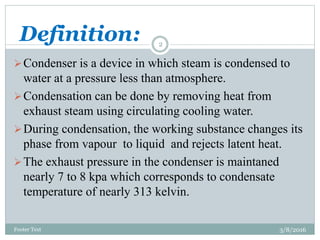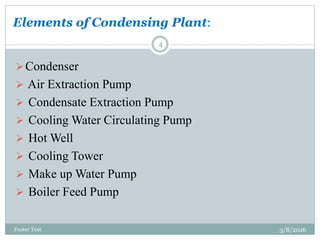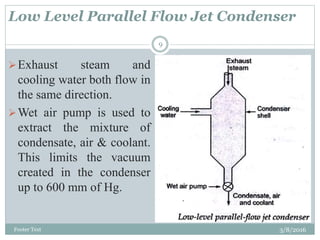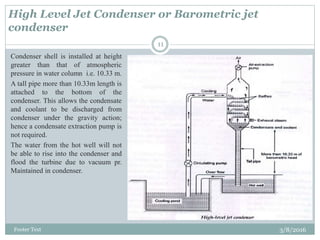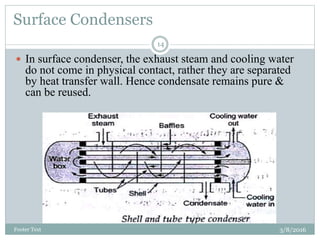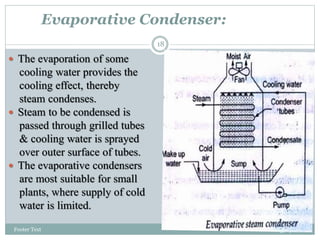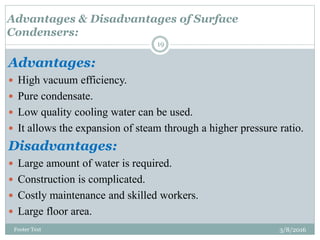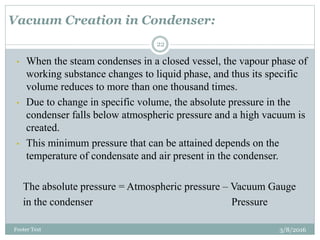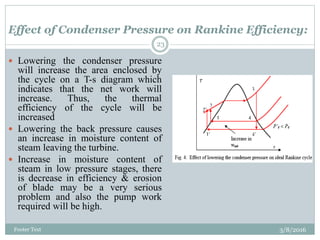This document discusses steam condensers and their types. It defines a condenser as a device that condenses steam to water using cooling water. There are two main types - jet condensers and surface condensers. Jet condensers mix steam and cooling water directly, while surface condensers separate them with a heat transfer wall. The document classifies condensers in various ways and describes the functions, elements, advantages and disadvantages of different condenser types. It also discusses vacuum creation, sources of air leaks, and the effect of condenser pressure on thermal efficiency.
